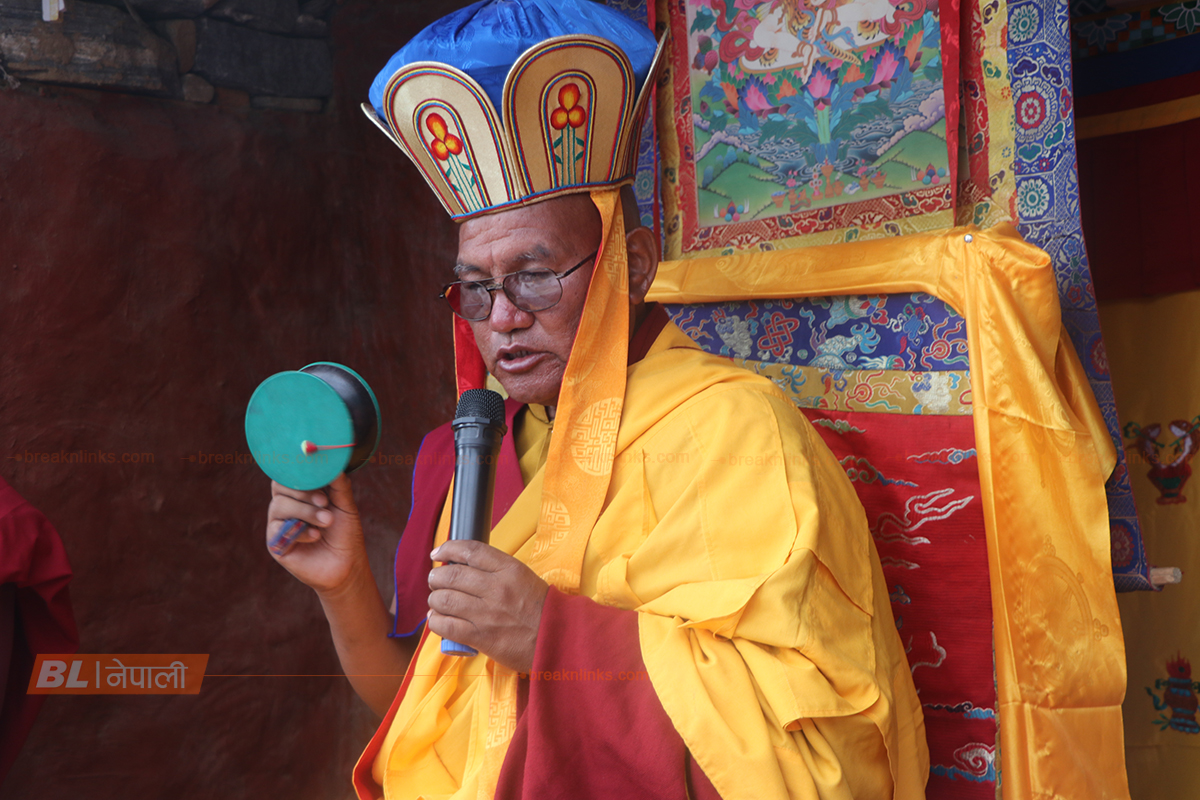In the 13th century, 'Lama Mela' and his longtime friend Nappo Jamba came from Tibet to Kaike in Dolpa. These two lamas, who came to Nepal from Tibet together, had their own religious beliefs. One believed in the Kagyu religion, and the other was Bhumbawala.
Both of these lamas who arrived at Dolpa were very powerful. The people of Kaike were amazed at their strength. After walking from Tibet, the two lamas reached Kaike of Dolpa, and the news that they were powerful reached the ears of Jumli king through the entire Dolpa district.
The king called both the lamas to Jumla overnight, and they were asked to show their strength upon reaching the king's palace. Lama Mela of Bhumb Dharma won in the show of strength.
Even the king was amazed at the power of Lama Mela. As a reward, the king bade farewell to the Lamas with a letter written in gold on copper.
After receiving a letter written by gold from the king, Lama Mela, after winning the competition, happily returned to Dolpa with his apostle, and his friend Nappo Jamba. But there was no accommodation in Dolpa. They lived in a cave near Palcho river (Selung) near the district headquarters Dunai. Lama Nappo Jamba, who lost the competition, was also present. He could not sleep at night.
"How do I return after losing?" he said to himself.
He was overwhelmed by stress. The villagers must have known. The night began to feel like a month to him. He made up his mind to kill Lama Mela and take away the gold letter he had acquired.
Nappo Jamba, who had lost the power show, began to take the winner's disciples into his own hands. Nappo manipulated Lama Mela's disciple into poisoning his won master. Lama Nappo Jamba gave a handful (trikos) of Asarfi in return for killing his master. When he got the gold letter, it turned into cow dung.
Lama Mela died at Dharapani in the current Kaike village municipality ward no.7.
There is a legend that Lama Mela came and sacrificed his life as Baijibara can be seen from Dharapani. There is a stupa to commemorate him at the place where Lama Mela gave his life.
The Pilgrimage site located in Kaike village municipality ward no.7 is not only considered as a pilgrimage site by the people of Kaike, but it is considered as a shrine by the entire Bon religion. 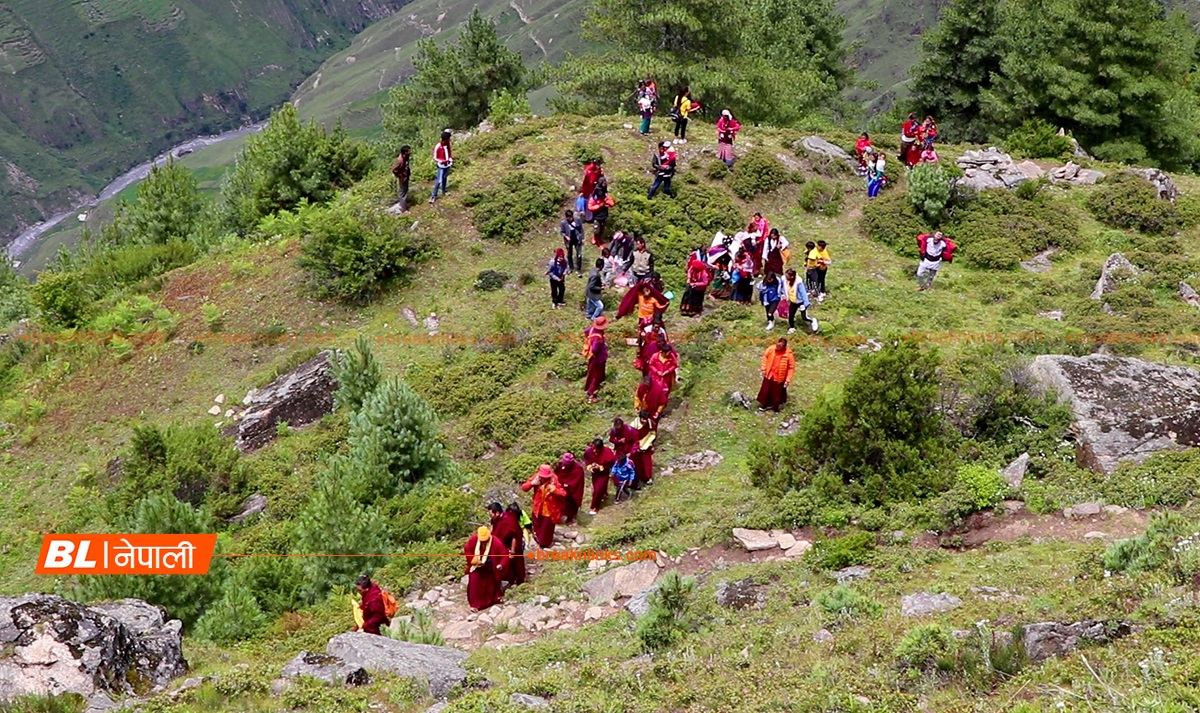
In the 13th century, both Lama Lamas from Tibet performed penance at this shrine.
Due to the different religions, there was a demonstration of power among them. Both were no less powerful.
The place where the two lamas sat is right opposite each other. Demonstrations of power began from both sides. The place where Lama Mela sat is considered as a place of pilgrimage by the followers of the Bon religion.
A special ritual is performed at this shrine on Bhadra Purnima of each year. Everybody from Kaike participates in the ritual. 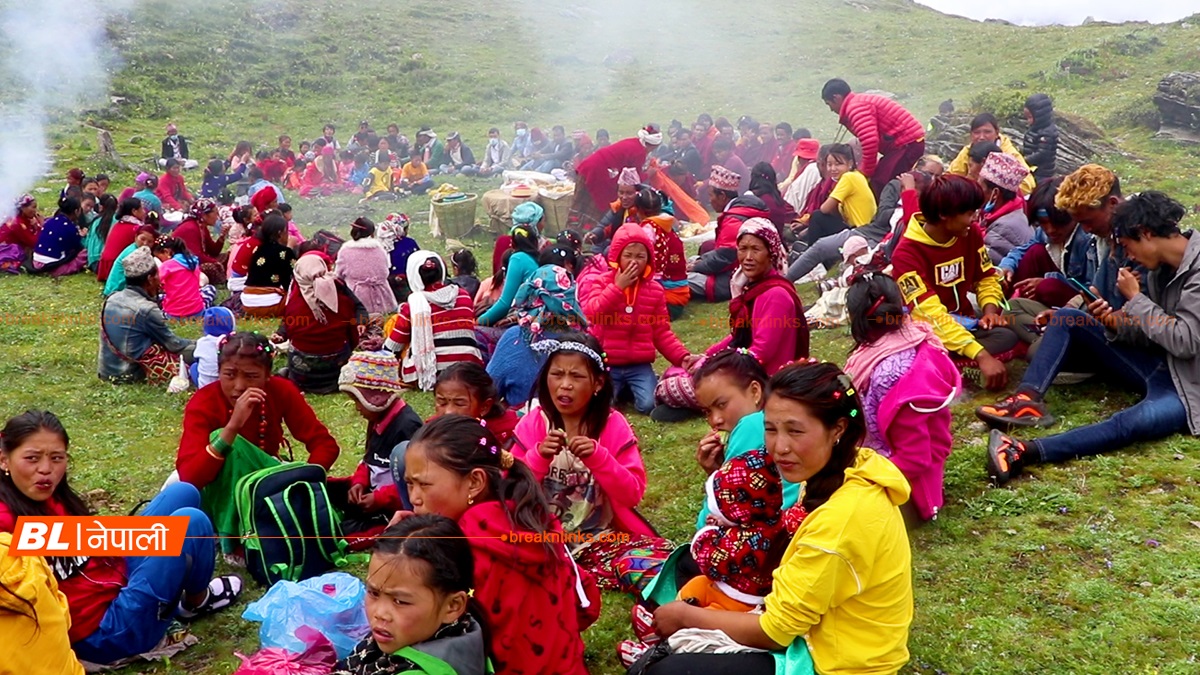
Before the Maoist armed conflict, there used to be a big fair on the full moon day of Bhadra, but after the armed conflict, people stopped coming. Even though the fair has been canceled, the yearly ritual still takes place. After the end of the Maoist armed conflict, the number of people coming here on the full moon day of Bhadra has started increasing.
As usual, on the full moon day of Bhadra this year, the ritual was performed at the place of penance, and the pilgrimage was surrounded by a special cloth called Kora.
This time, Khempo Ghese Nima Kunkap Rimpoche of Yungdung Suchal Gumba in Baijibara participated in the worship.
This year's worship was even grander.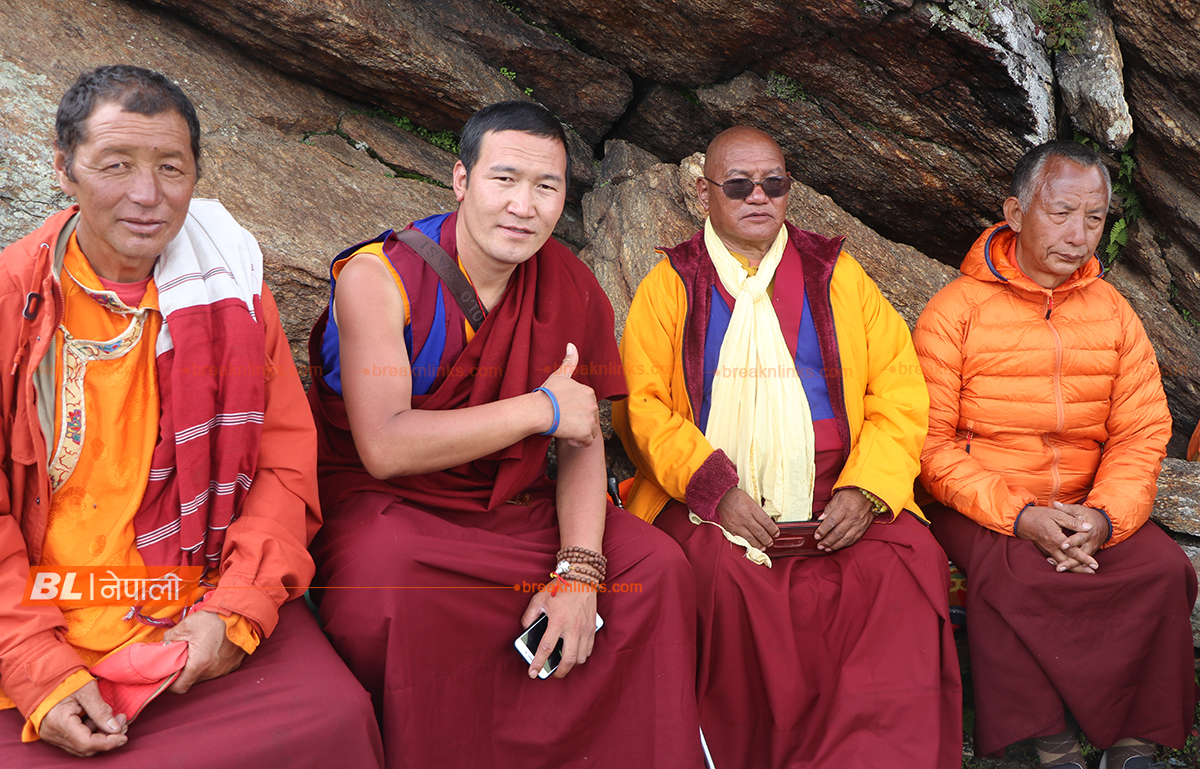
The worship was attended by lamas from Kathmandu. The ritual is performed in the village monastery two days before the full moon of Bhadra.
On the morning of the full moon, either the Khekpo Khempa of the Gumba or the head lama of the village leads the way for the pilgrims to the shrine of Lama Mela.
After circling (Kora), the pilgrims reach the cave where lama Mela lived in penance, and they worship and remember Lama Mela.
After the puja, the villagers have a group meal and enjoy their time.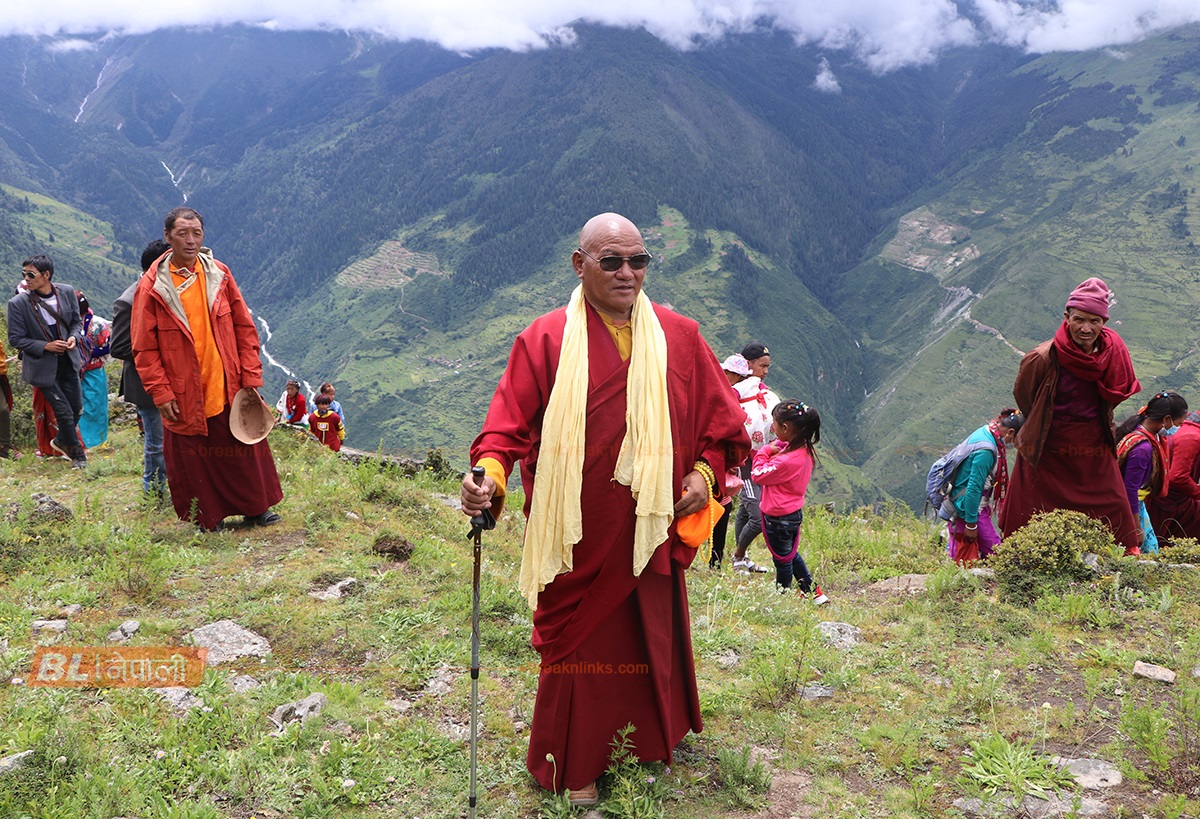
It is customary to wear a wang after reaching the monastery. It is customary to receive wang as an offering from the Lama's hand so that it is good throughout the year. Everyone who came to worship from Khempa Ghese Kunkap was wearing Wang.
